|
Indian Uprisings and a Fort of Stone – The place always was pretty empty. New Mexico had no more than 93,516 people in it before the Civil War. Of those, around 10,000 were Indians. There were enough of them to make trouble for the remaining population, mostly whites, who were settling in the territory’s Indian country in increasing numbers. 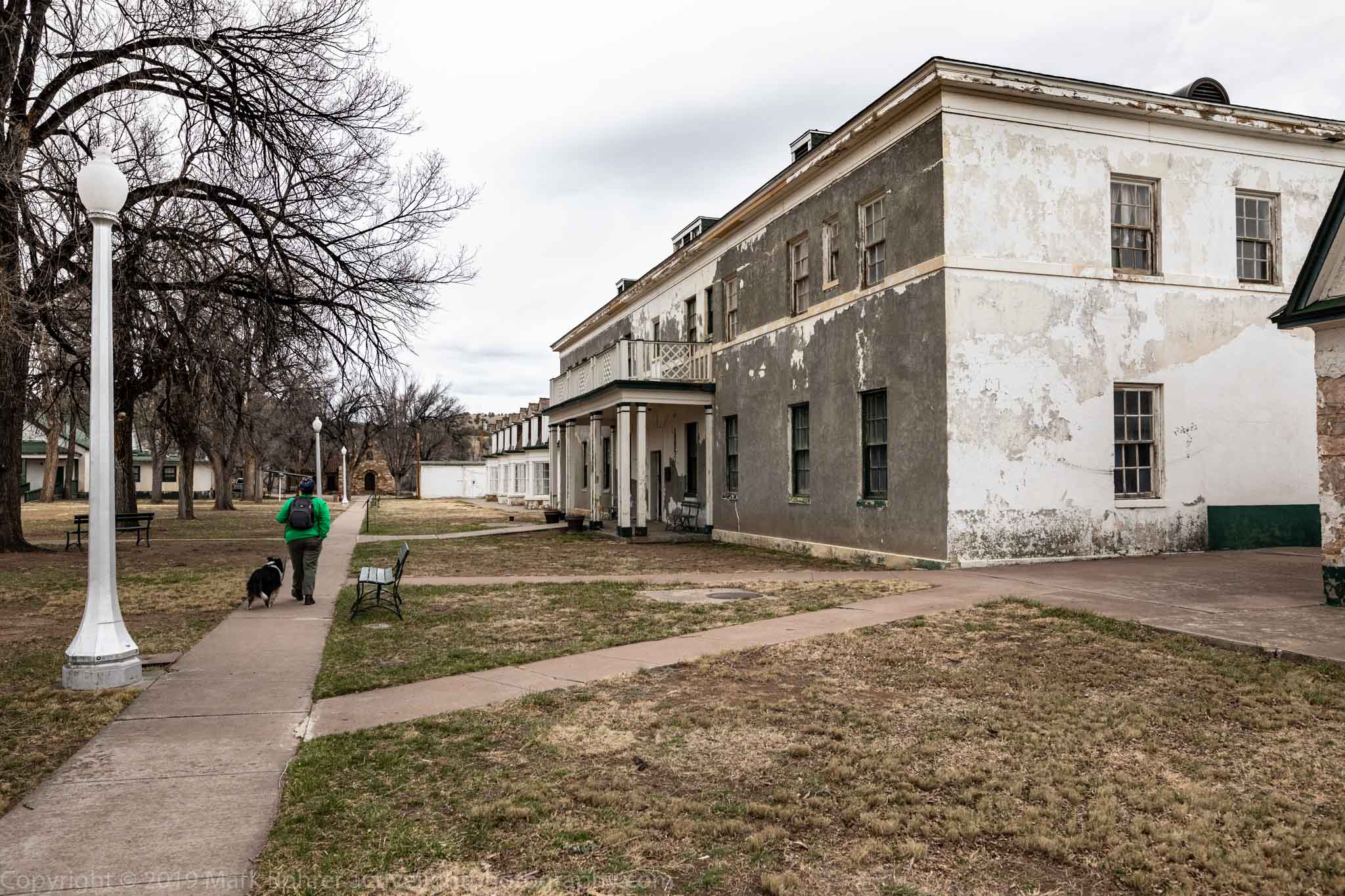 Hospital and promenade, Fort Stanton Fort Stanton was built in 1855 as a base of operations for soldiers fighting the raiding Mescalero Apache, named for a captain who was killed fighting them. It’s surrounded by ranch land and national forest in today’s Lincoln County. 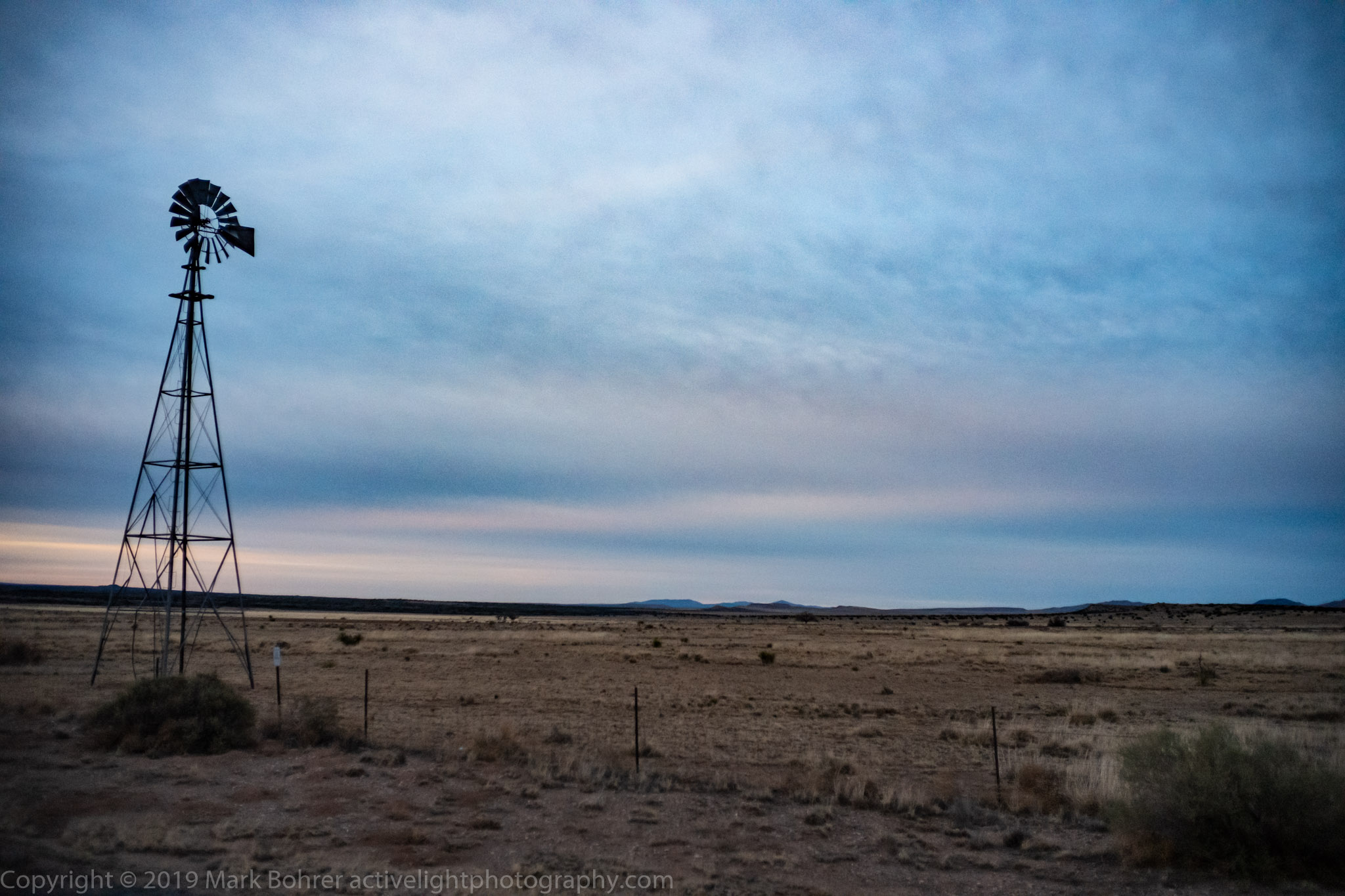 Windmill and ranch land, Lincoln County, New Mexico Army Occupations in the Civil War The fort was abandoned and set afire by Union soldiers in 1861 to deny its use to Confederates, but torrential rains put out the fire. Rebel troops took it over later that year, but only stayed a month before moving their forces further west to Mesilla. They too set fire to the fort on their way out, and this time it burned. But the place had been built from native stone, so the shell remained for Kit Carson’s volunteer command to reoccupy in 1862. 20th Century Changes Fort Stanton was rebuilt after the Civil War, and continued as a base of operations against the Apache until closure in 1896. It became a Merchant Marine tuberculosis hospital in 1899, a Civilian Conservation Corps work camp in the 1930s, a WW II camp for German and Japanese merchant sailors and POWs, and was again a state hospital after WW II. The non-profit historic preservation group Fort Stanton, Inc successfully influenced the State of New Mexico to preserve the fort as a state monument, and obtained initial grant money to restore it in 1997. An Exploration Out Of The Rain We’d lost out on weather for our own exploration of nearby Valley of Fires State Park – we didn’t feel like trying to hike the lava fields in intermittent drizzle. After a decent breakfast at Capitan’s Smokey Bear Restaurant, we decided to find relatively sheltered attractions. Fort Stanton was just 10 minutes down the road, so off we went. 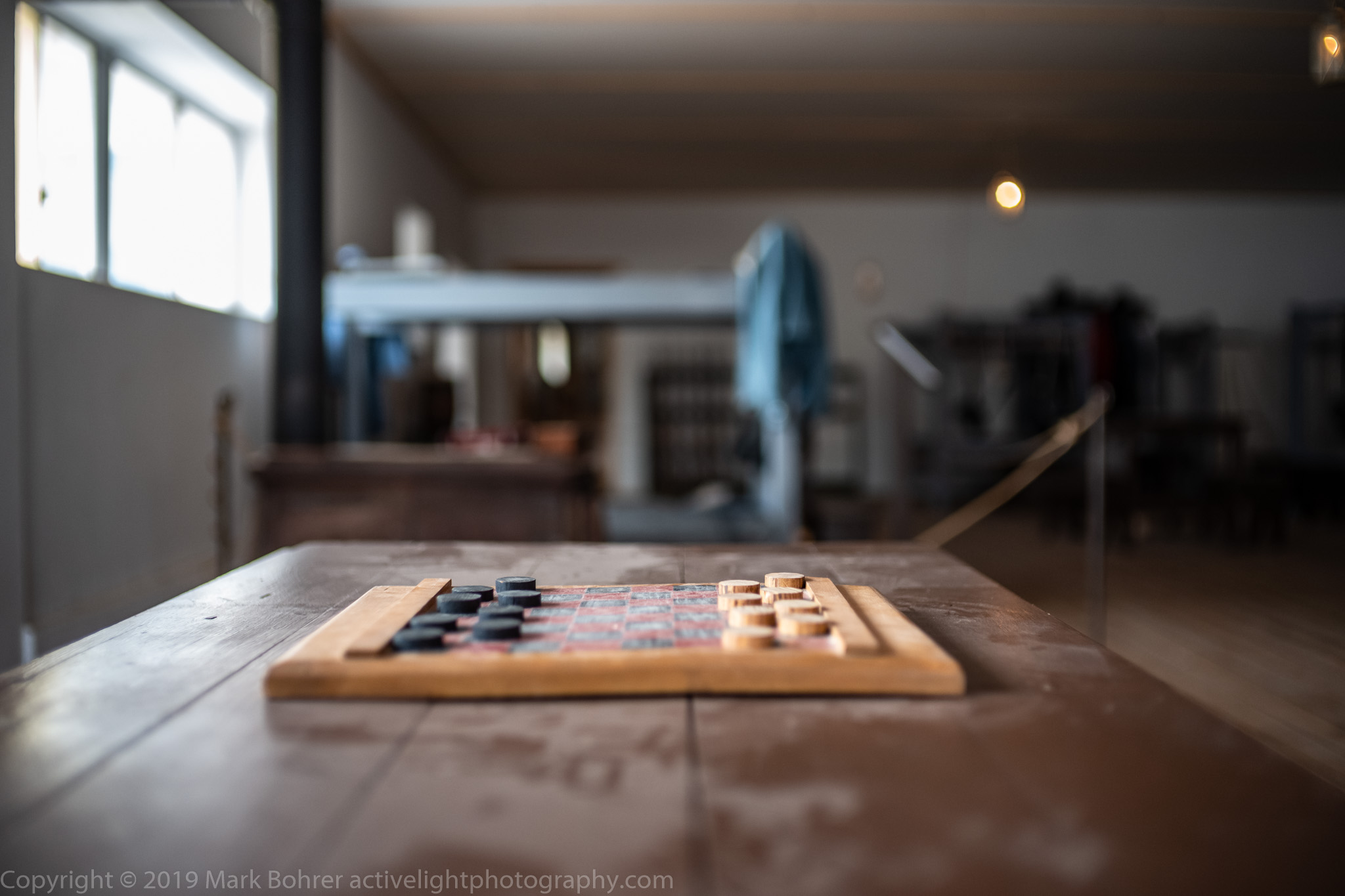 Abandoned checkers game 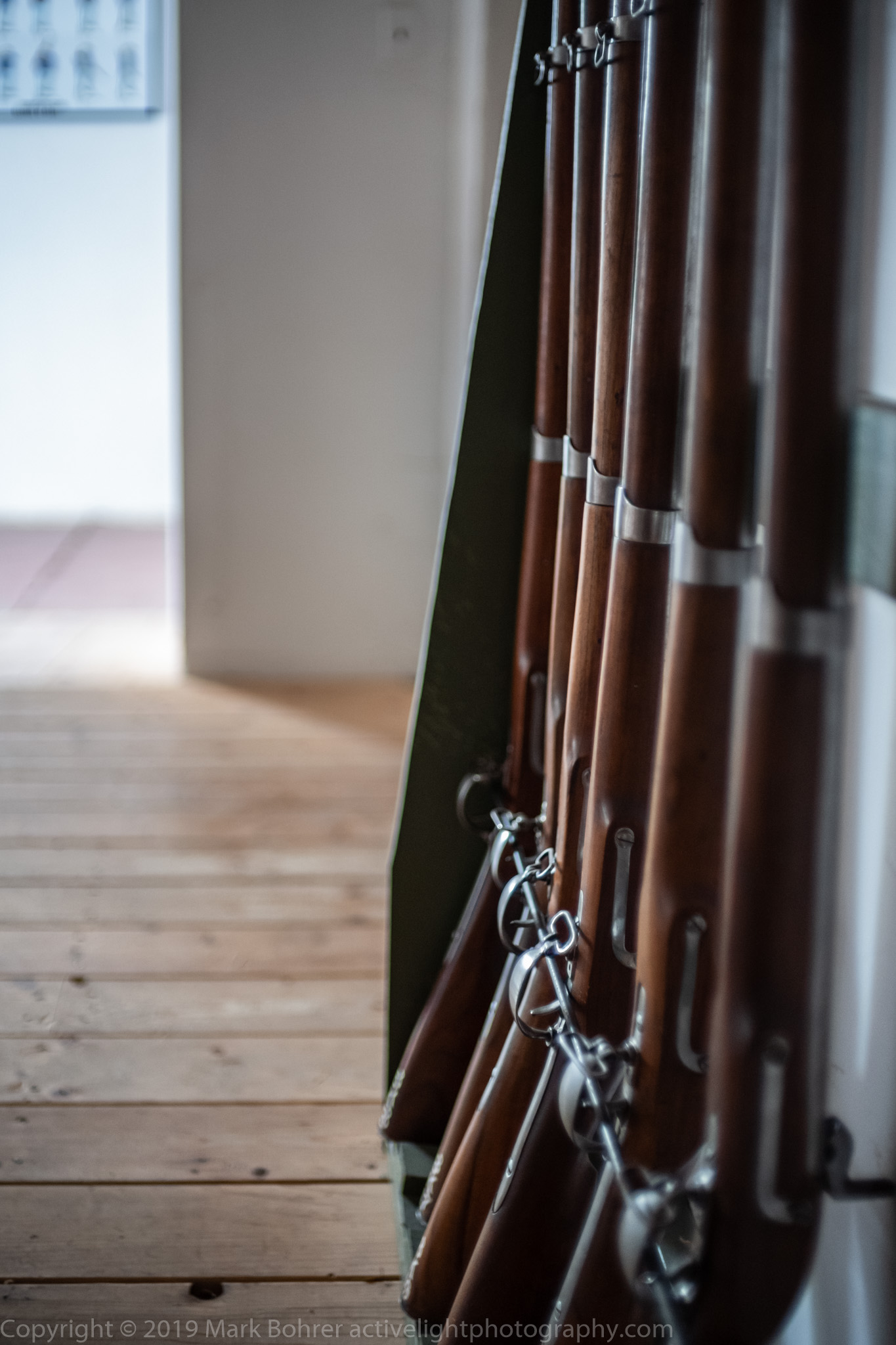 1873 Springfield rifles ready to go After orientation and a film at the excellent Fort Stanton Museum, we took a look at the fort’s restored buildings. The barracks looked as if the regiment had been ordered out after Apaches in the middle of some recreation – cards littered a table, and a game of checkers was ready to play. But only a third of the rifles were missing from the racks, so the rest of the soldiers had to be around somewhere. 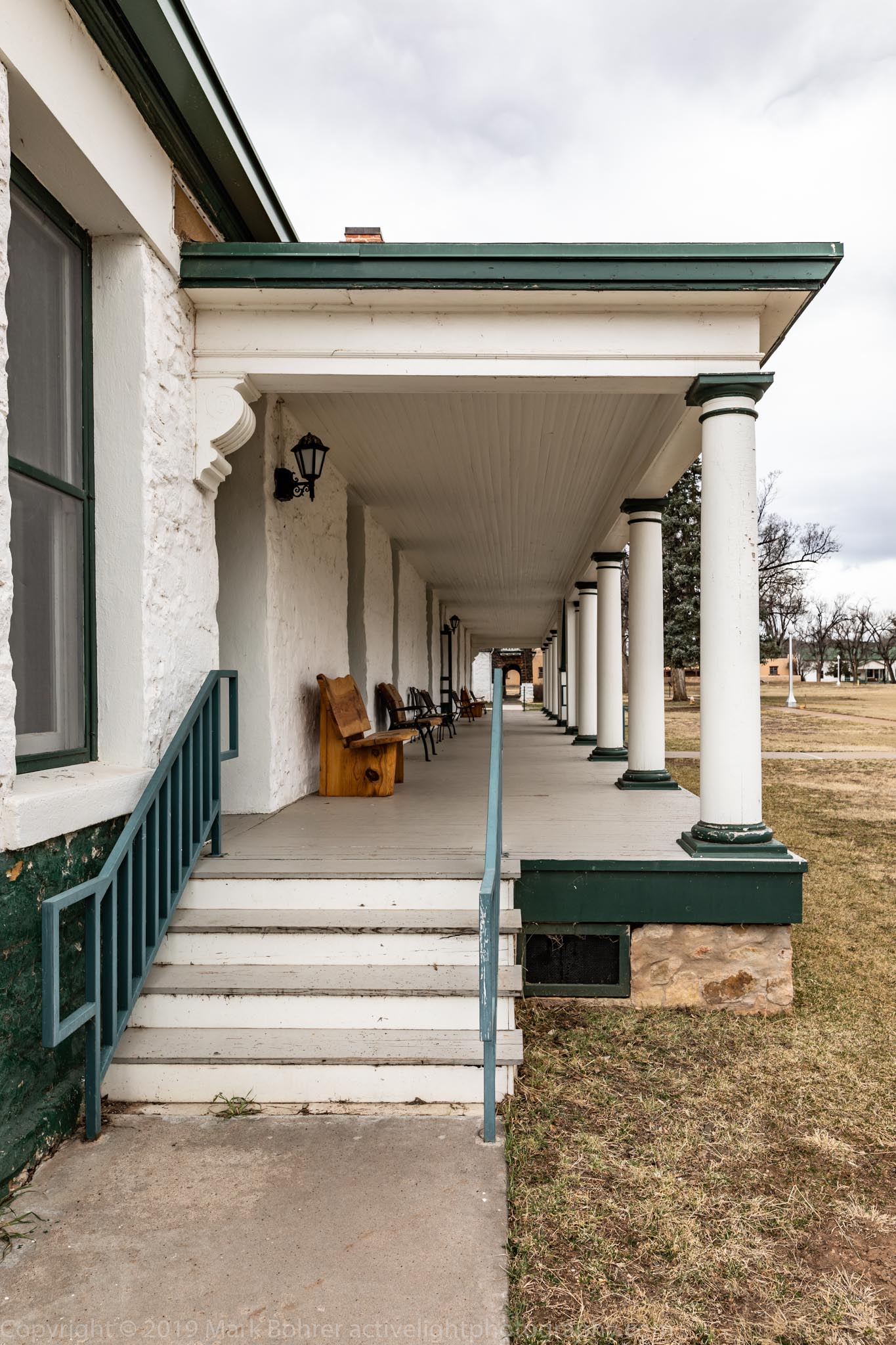 TB patients sat out here in all weather for fresh air, thought to help with the disease. The hospital wards had also been restored. I can’t imagine what it was like to have tuberculosis, then an incurable and sometimes fatal disease, and know I might never walk away from this place again. The dry climate and fresh air helped sufferers, but weren’t a cure. Though German physician Robert Koch identified the responsible bacterium in 1884, a cure wasn’t discovered until 1945. 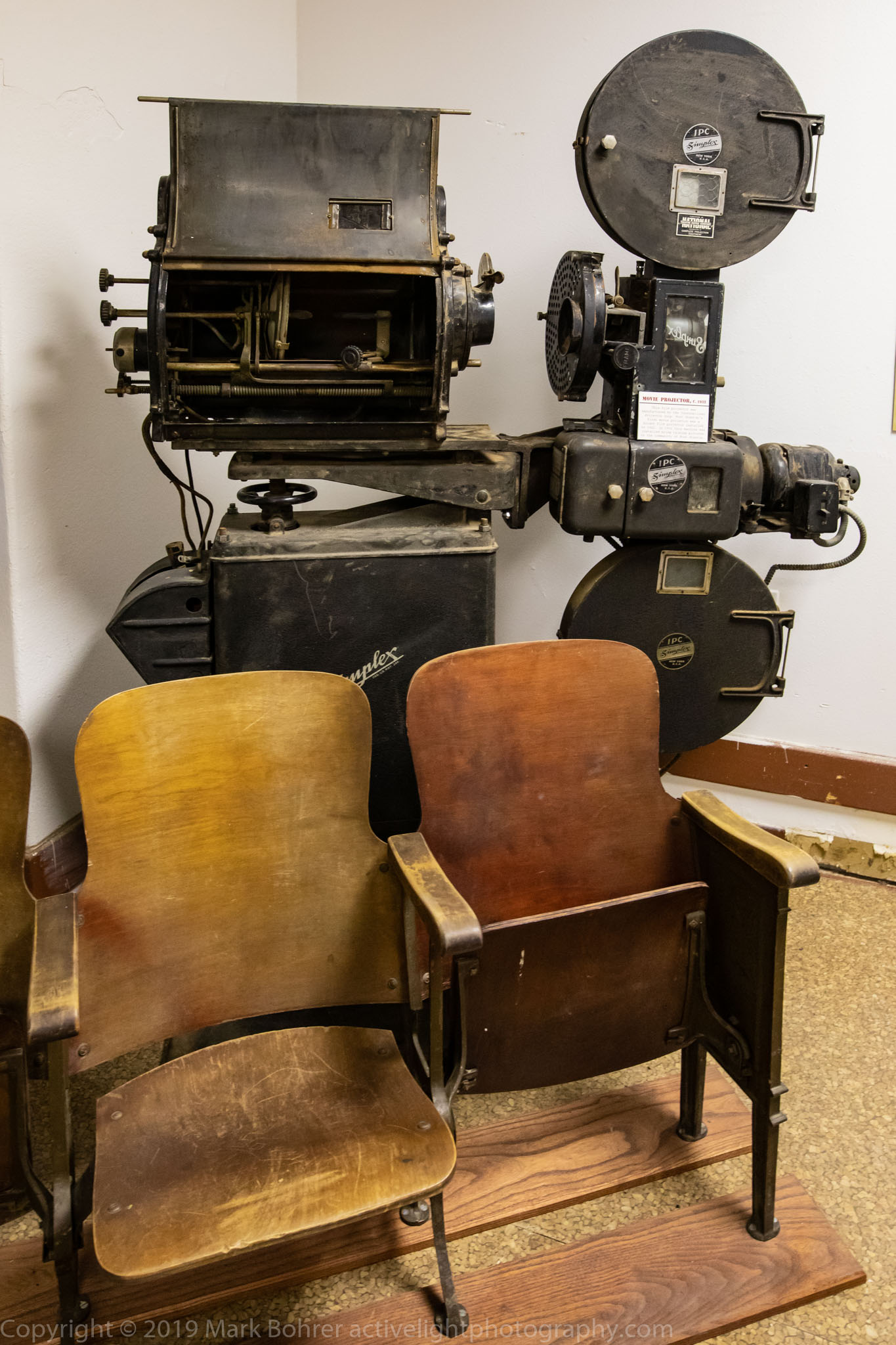 Movie night At least as a WW II POW, you knew you’d go home after the war. 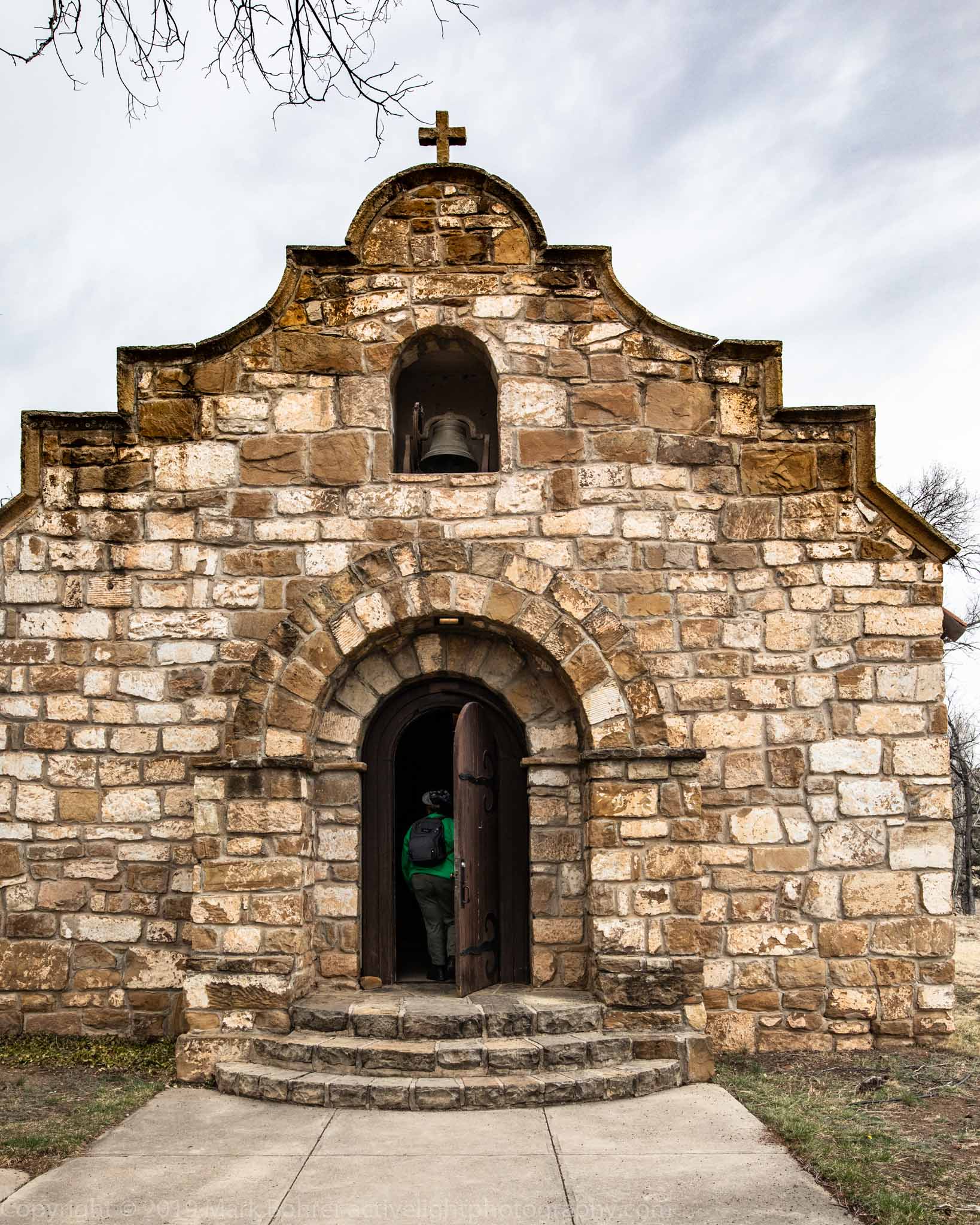 Chapel, Fort Stanton 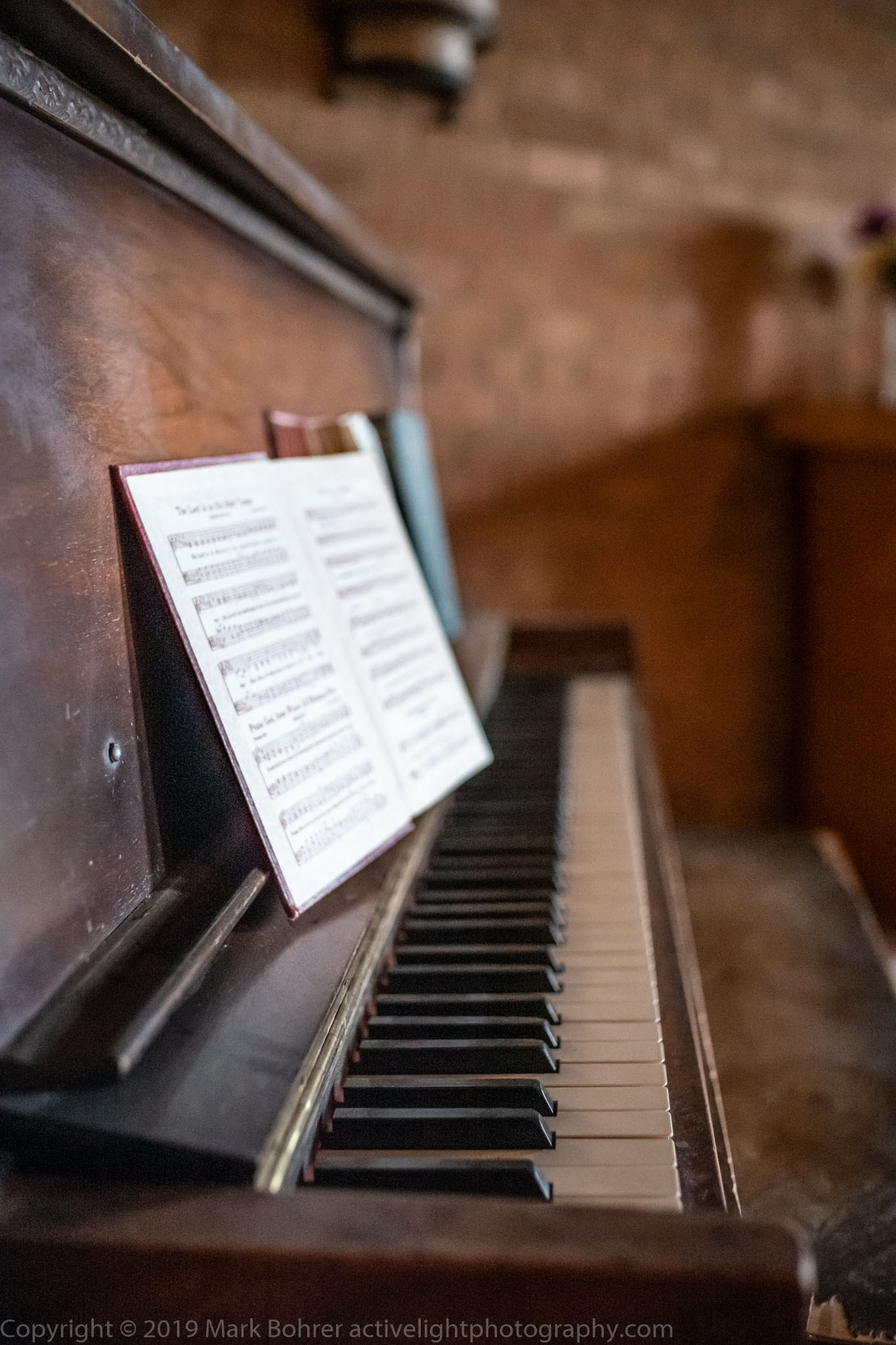 Piano, Fort Stanton chapel Church was clearly very important to the fort’s residents during its civilian history. The chapel was built originally in 1913, and rebuilt at its present location in 1940, with the old building deconstructed and the stone facade carefully rebuilt as it had been. Today the chapel sees weddings and other events, maintained as it might have appeared in the 1940s. As a former rock and roll keyboard player, the organ and upright piano caught my eye. It looked like you’d have had to pump the organ yourself to get sound out of it without electric power hookup. I much prefer acoustic pianos – I can hammer the keys for a fair amount of volume without other physical effort or power. 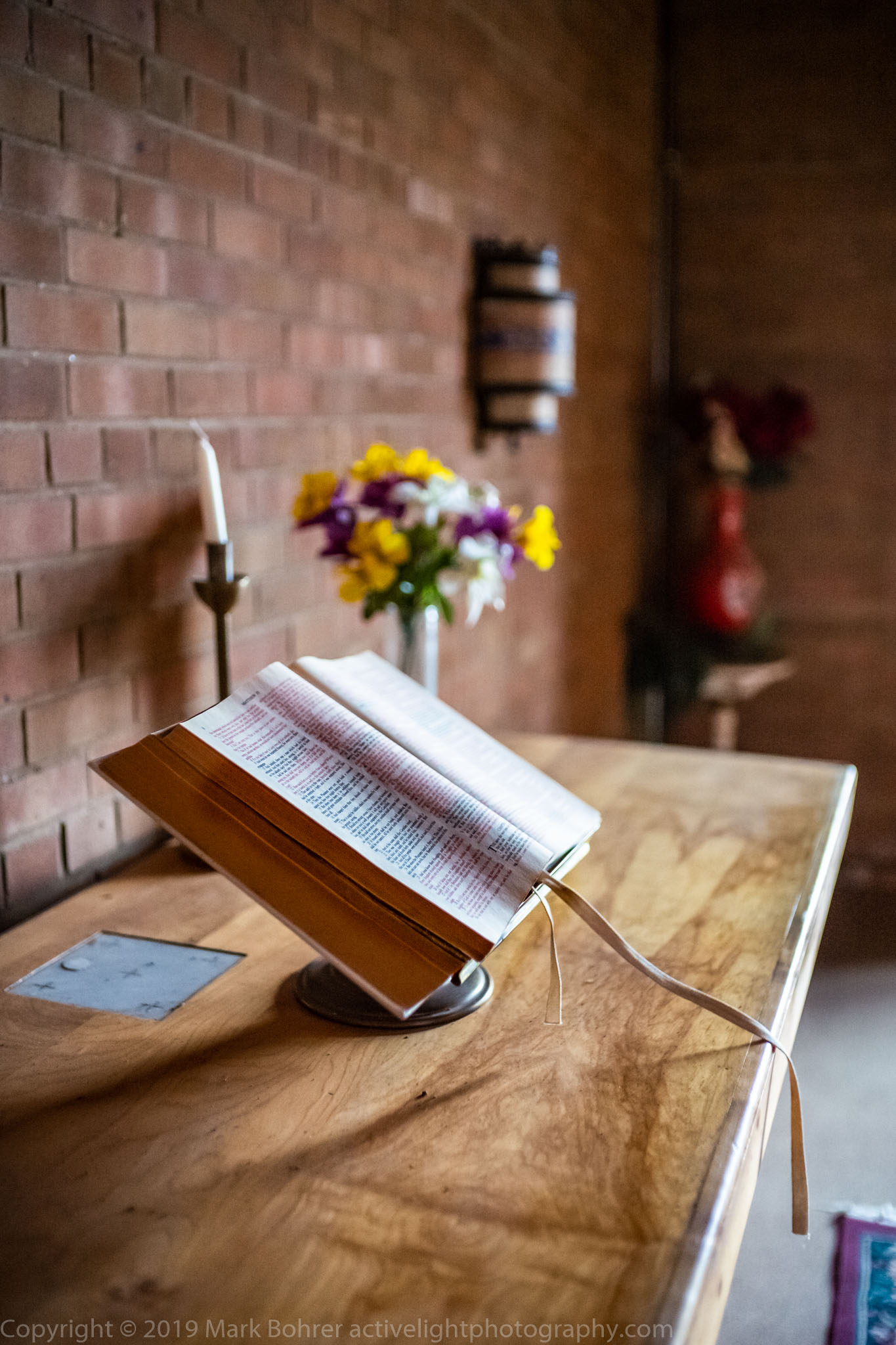 Ready for the sermon The fort holds a Civil War-era re-enactment event, Fort Stanton Live, in July. We plan to brave the summer heat and head back down there for that. 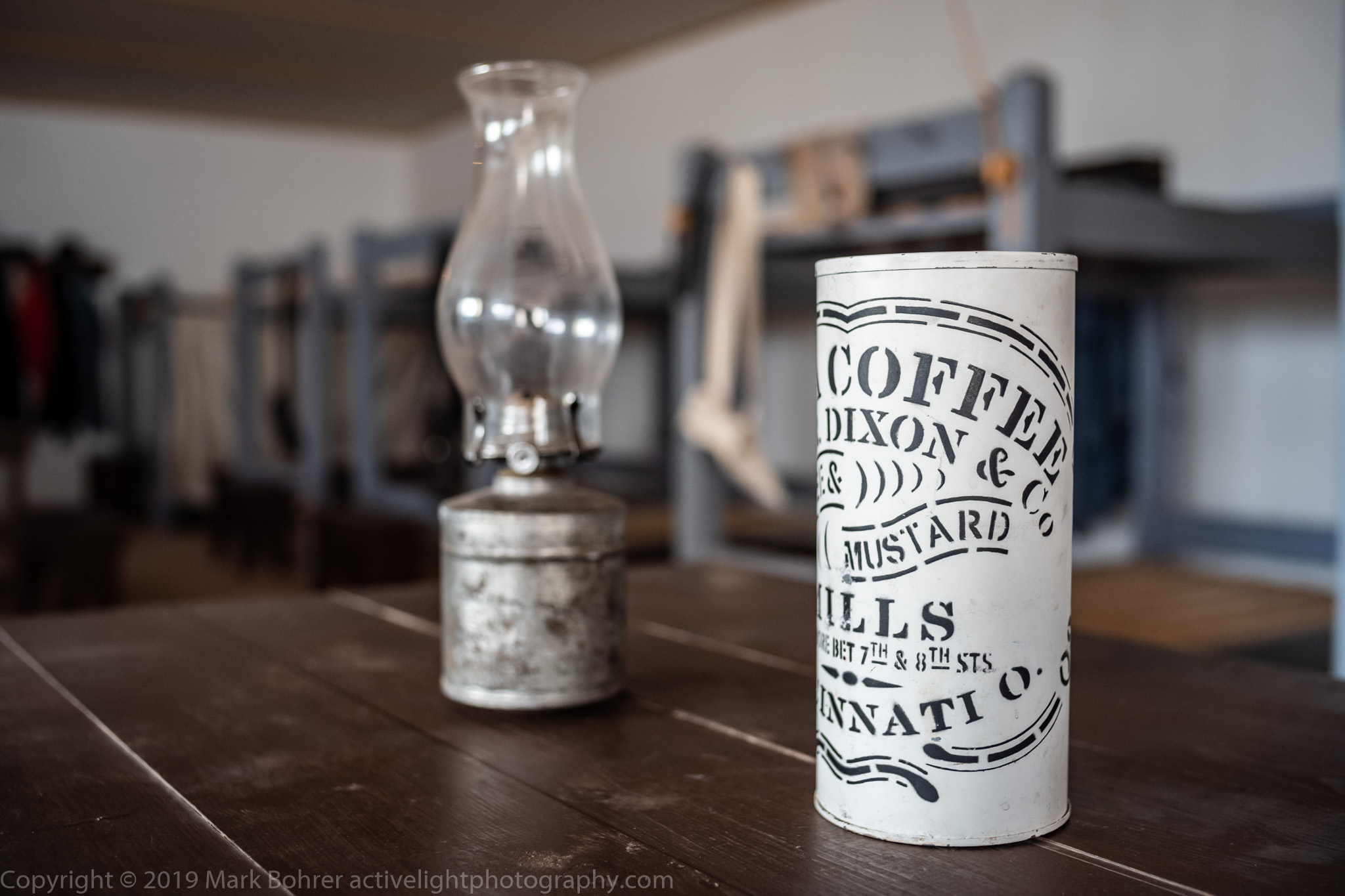 Coffee in the barracks
Coffee in the barracksShot Notes I carried a Leica SL with Voigtlander 35mm f/1.2 Nokton VM II for closeups to 19″. This gave me tight shots of the checkers, cards, coffee, dust and rifles in the barracks, with extremely-narrow depth of field to isolate subjects from the background. Sigma’s 24mm f/1.4 Art focuses down to 11″, so it got me close and wider on an EOS 5D mk IV. I didn’t find a reason to use anything besides these two wide-angle lenses, both on cameras with through-the-lens viewing. More Information US Census Bureau (nd) Population of the United States in 1860: Territory of New Mexico. Retrieved from https://tinyurl.com/y2ev3cd6 Fort Stanton (nd) Then and Now… The History of Fort Stanton. Retrieved from https://www.fortstanton.org/history/ American Battlefield Trust (nd) Fort Stanton. Retrieved from https://tinyurl.com/y3m5nd96 New Mexico Historic Historic Sites (nd) Fort Stanton Historic Site – History. Retrieved from https://tinyurl.com/yyr3sl4t Annals of the American Thoracic Society (October 14, 2015) Treatment of Tuberculosis. A Historical Perspective. Retrieved from https://tinyurl.com/y2q24vrl Fort Stanton (nd) Fort Stanton Live. Retrieved from https://tinyurl.com/y6cavdsd The Fort Stanton Live Civil War / Indian War re-enactment is scheduled for July 13, 2019. |
(408) 483-3782
Curious about how to shoot ruins?(408) 483-3782

Recent Comments